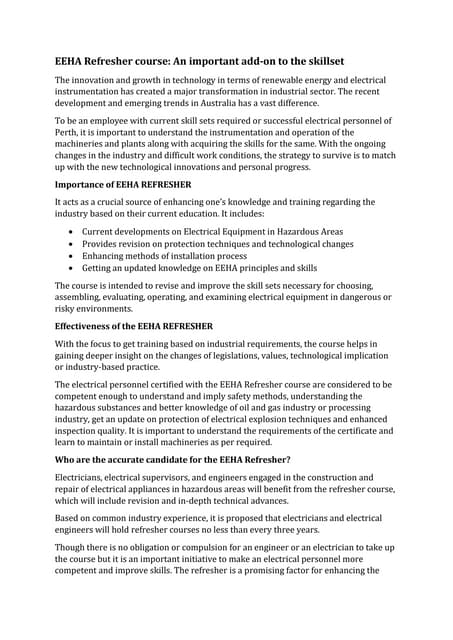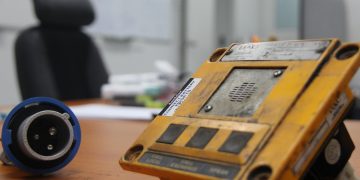Roar Solutions - Truths
Roar Solutions - Truths
Blog Article
The Definitive Guide for Roar Solutions
Table of ContentsThe Facts About Roar Solutions RevealedExcitement About Roar SolutionsThe 7-Second Trick For Roar Solutions
In such an environment a fire or explosion is possible when 3 basic problems are met. This is usually described as the "unsafe location" or "combustion" triangular. In order to shield installations from a potential surge a technique of analysing and identifying a possibly unsafe location is needed. The purpose of this is to guarantee the right selection and installment of tools to eventually prevent an explosion and to ensure security of life.
(https://www.bitchute.com/channel/JJyNq2gAk2M7)
No equipment must be mounted where the surface area temperature level of the devices is better than the ignition temperature level of the provided risk. Below are some typical dust harmful and their minimal ignition temperature. Coal Dust 380C 225C Polythene 420C (thaws) Methyl Cellulose 420C 320C Starch 460C 435C Flour 490C 340C Sugar 490C 460C Grain Dirt 510C 300C Phenolic Resin 530C > 450C Aluminium 590C > 450C PVC 700C > 450C Residue 810C 570C The chance of the hazard existing in a focus high enough to cause an ignition will vary from area to area.
In order to identify this threat an installment is divided into areas of threat relying on the amount of time the hazardous is existing. These areas are referred to as Areas. For gases and vapours and dirts and fibers there are 3 areas. Zone 0 Area 20 An unsafe ambience is extremely likely to be present and might exist for long periods of time (> 1000 hours each year) or also continually Zone 1 Area 21 A hazardous ambience is possible but unlikely to be existing for long durations of time (> 10 450 C [842 F] A classification of T6 means the minimal ignition temperature level is > 85 C [185 F] Hazardous location electrical equipment possibly designed for usage in higher ambient temperature levels. This would certainly indicated on the ranking plate e.g. EExe II C T3 Ta + 60C( This implies at 60C ambient T3 will not be gone beyond) T1 T1, T2, T3, T4, T5, T6 T2 T2, T3, T4, T5, T6 T3 T3, T4, T5, T6 T4 T4, T5, T6 T5 T5, T6 T6 T6 A T Class ranking of T1 implies the optimum surface temperature level generated by the tool at 40 C is 450 C. Assuming the associated T Course and Temperature ranking for the devices are suitable for the location, you can always utilize a tool with an extra stringent Division ranking than required for the location. There isn't a clear solution to this inquiry sadly. It really does rely on the sort of equipment and what fixings need to be performed. Devices with specific test procedures that can not be carried out in the field in order to achieve/maintain 3rd party ranking. Have to come back to the manufacturing facility if it is before the equipment's solution. Field Repair Service By Authorised Personnel: Challenging screening may not be called for however particular procedures might require to be adhered to in order for the devices to keep its 3rd party ranking. Authorised personnel need to be used to perform the work appropriately Repair service need to be a like for like substitute. New part need to be considered as a straight replacement requiring no special testing of the equipment after the repair work is complete. Each tool with a hazardous rating ought to be assessed separately. These are laid out at a high degree listed below, yet for even more thorough details, please refer straight to the standards.
The Single Strategy To Use For Roar Solutions
The tools register is a thorough database of tools records that consists of a minimum collection of fields to determine each item's location, technological specifications, Ex-spouse classification, age, and ecological information. This information is essential for monitoring and handling the tools effectively within harmful areas. In contrast, for regular or RBI sampling assessments, the quality will certainly be a mix of Detailed and Close evaluations. The ratio of Comprehensive to Shut evaluations will certainly be identified by the Tools Danger, which is analyzed based on ignition danger (the likelihood of a resource of ignition versus the likelihood of a flammable atmosphere )and the dangerous location classification
( Area 0, 1, or 2). This variation will also influence the resourcing demands for job preparation. As soon as Whole lots are defined, you can develop tasting strategies based upon the example dimension of each Whole lot, which describes the variety of arbitrary tools products to be examined. To identify the needed sample dimension, 2 elements require to be evaluated: the size of the Lot and the group of evaluation, which suggests the level of initiative that should be applied( decreased, normal, or boosted )to the examination of the Great deal. By combining the classification of evaluation with the Whole lot size, you can then establish the suitable being rejected criteria for a sample, suggesting the allowable number of faulty things located within that sample. For even more details on this process, please refer to the Energy Institute Standards. The IEC 60079 typical recommends that the maximum period in between assessments should not surpass 3 years. EEHA inspections will also be conducted outside of RBI campaigns as component of arranged maintenance and tools overhauls or repairs. These inspections can be attributed toward the RBI sample dimensions within the influenced Great deals. EEHA inspections are conducted to determine faults in electrical equipment. A weighted racking up system is vital, as a single item of devices may have several mistakes, each with varying degrees of ignition risk. If the combined rating of both assessments is less than two times the fault rating, the Lot is regarded acceptable. If the Whole lot is still thought about unacceptable, it must undertake a full examination or validation, which may cause more stringent examination protocols. Accepted Great deal: The causes of any type of mistakes are identified. If an usual failure mode is located, extra tools may need evaluation and fixing. Faults are categorized by seriousness( Security, Honesty, Housekeeping ), making certain that urgent problems are analyzed and resolved without delay to mitigate any type of effect on security or procedures. The EEHA database ought to track and record the lifecycle of faults in addition to the rehabilitative activities taken. Applying a durable Risk-Based Inspection( RBI )strategy is vital for ensuring compliance and security in taking care of Electric Tools in Hazardous Areas( EEHA) (Roar Training Solutions). Automated Fault Scoring and Lifecycle Administration: Easily take care of faults and track their lifecycle to improve examination precision. The introduction of this support for risk-based evaluation additionally enhances Inspectivity's setting as a best-in-class option for regulative compliance, in addition to for any kind of asset-centric assessment use situation. If you have an interest in discovering more, we welcome you to ask for a presentation and find exactly how our option can transform your EEHA monitoring procedures.
10 Simple Techniques For Roar Solutions

In terms of eruptive risk, an unsafe location is an atmosphere in which an eruptive environment exists (or might be anticipated to be present) in amounts that call for unique precautions for the building, installation and usage of tools. eeha courses. In this write-up we discover the obstacles faced in the office, the threat control actions, and the required proficiencies to function safely
It is an effect of modern life that we make, keep or handle a series of gases or liquids that are deemed flammable, and a series of dirts that are considered flammable. These substances can, in specific conditions, create explosive environments and these can have major and unfortunate repercussions. A lot of us recognize with the fire triangular get rid of any one of the 3 components and the fire can not occur, however what does this mean in the context of dangerous areas? When damaging this down right into its simplest terms it is essentially: a combination of a certain quantity of launch or leakage of a particular compound or product, combining with ambient oxygen, and the existence of a source of ignition.
In the majority of circumstances, we can do little More hints concerning the degrees of oxygen airborne, yet we can have substantial influence on sources of ignition, as an example electrical devices. Harmful areas are recorded on the hazardous location category drawing and are determined on-site by the triangular "EX LOVER" sign. Below, among various other key info, zones are split into 3 types depending upon the threat, the chance and duration that an eruptive ambience will certainly exist; Area 0 or 20 is deemed the most dangerous and Zone 2 or 22 is considered the least.
Report this page